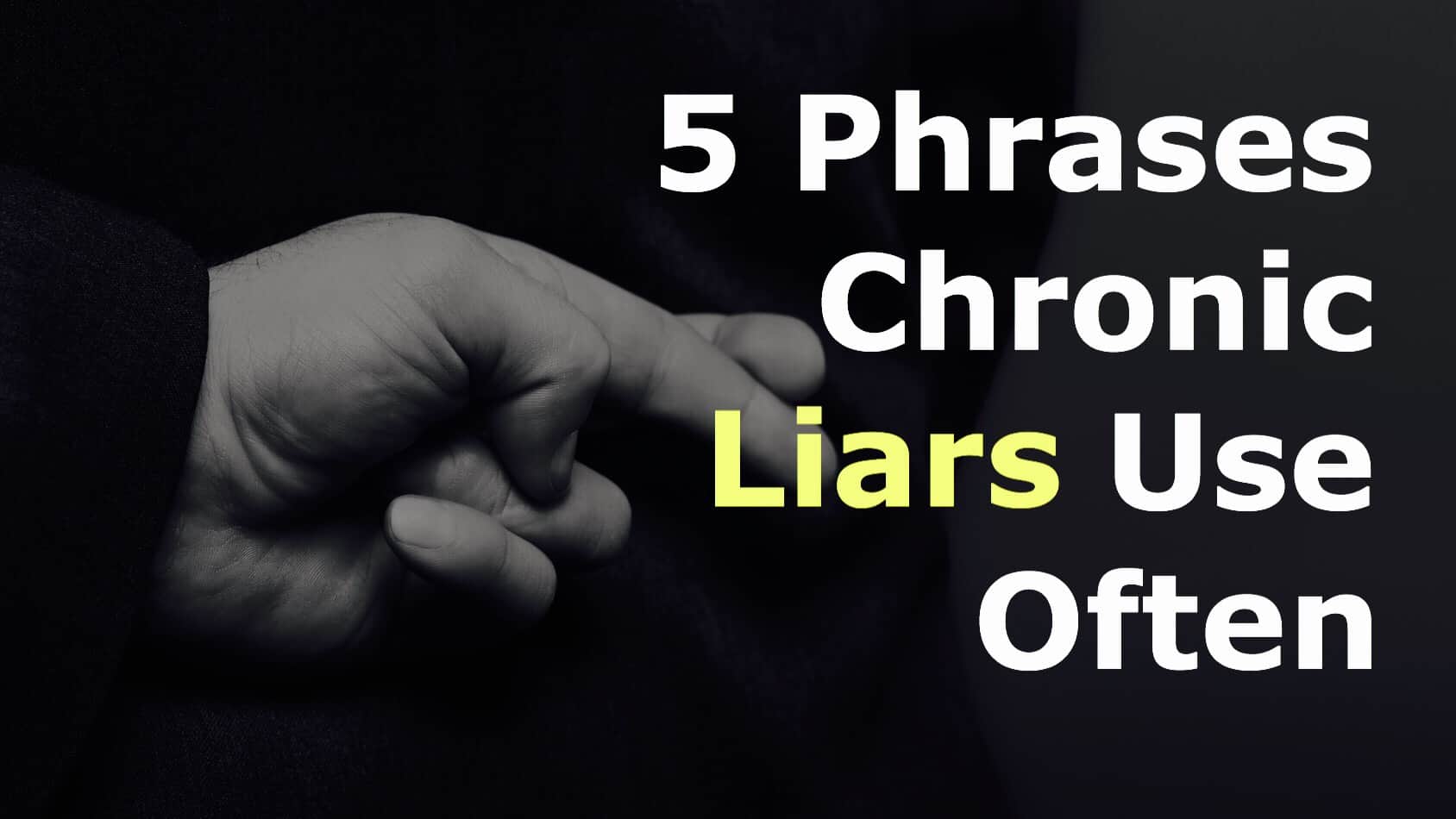Here’s how you can spot fake people.
In a world where connections can be as fleeting as a quick swipe across a screen, the value of authentic relationships has never been more pronounced. Genuine relationships provide a foundation of trust and understanding that enriches our lives, promoting well-being and emotional security. However, not all people we encounter will have the best intentions or present their true selves. That is where recognizing the signs of a “fake person” comes into play.
Understanding these red flags helps you build healthier relationships and empowers you to avoid the pitfalls of deceit, giving you more control over your interactions.
What Are the Main Signs of a Fake Person?

1 – Inconsistent Stories Reveal a Fake Person
One of the clearest signs of a fake person is the inconsistency in their stories. Inconsistencies can manifest as changes in details or conflicting timelines. They might also come up with entirely different versions of the same event told to different people. These discrepancies often arise because the individual tailors their narrative to suit their current audience or achieve a specific outcome rather than sticking to the truth.
To spot these inconsistencies, paying attention to the details shared over time is crucial. If someone often changes key elements of a story, or their recount of past events seems to evolve with each telling, it could be a red flag. You can stay vigilant and aware by keeping mental notes or having a good memory. Over time, patterns may emerge that indicate whether someone is genuine.
2 – Over-enthusiasm and Fake People
Another indicator of a potentially fake person is an over-enthusiasm that feels out of place or forced. While enthusiasm can be a genuine emotion, excessive or inappropriate exuberance may be used as a façade to hide true feelings or motives. This kind of enthusiasm often lacks depth and can come across as insincere.
Observe how enthusiasm is expressed in different situations to differentiate genuine excitement from forced positivity. Genuine excitement is usually consistent with the person’s known passions and interests and aligns with the conversation’s context. In contrast, forced positivity may seem disproportionate to the situation. It may also feel irrelevant to the topic.
3 – Mismatched Body Language
Body language provides critical insights into a person’s true feelings and intentions. A fake person might say one thing while their body language tells a different story. For instance, they might express happiness or agreement verbally, but their body language could show discomfort or disagreement. These can be crossed arms, a lack of eye contact, or facial expressions that don’t match up with their words. By understanding these cues, you can feel more confident in detecting fake people.
To understand these cues better, consider how someone’s expressions align with their spoken words. Genuine emotions are usually accompanied by congruent body language. For example, a truly happy person will smile with their whole face, eyes included. If someone’s words don’t match their non-verbal cues, it could be a sign that they’re not being entirely honest or authentic i.
4 – Overuse of Flattery May Indicate a Fake Person
Flattery, when used genuinely, can be a kind and friendly gesture that strengthens social bonds. However, excessive flattery can often serve as a tool for manipulation. People may use excessive flattery to ingratiate themselves, curry favor, or distract from their shortcomings. The strategic deployment of unwarranted praise can be a tactical move, especially in environments where they seek to gain something—personal relationships, professional settings, or social circles.
To discern whether compliments are sincere or manipulative, observe the context in which they are given and their frequency. Genuine compliments are usually specific and relevant to the person being praised’s actual achievements or qualities. In contrast, manipulative charm or flattery often feels out of place, excessive, or unrelated to specific actions or traits. Additionally, if compliments come your way predominantly when the other person needs a favor or approval, this timing can be a significant indicator of their true intentions.
5 – A Lack of Eye Contact
Eye contact is a powerful part of nonverbal communication, conveying honesty, confidence, and engagement. A consistent lack of eye contact might signal dishonesty, anxiety, or disinterest. However, it’s important to consider cultural differences and personal comfort levels when making eye contact. That’s because these can vary widely among individuals and situations. What might be considered a lack of eye contact in one culture could be a sign of respect in another.
Understanding when avoiding eye contact indicates dishonesty involves noting the consistency of behavior and the circumstances under which eye contact is avoided. If someone typically maintains eye contact but suddenly looks away when discussing certain topics, this change can signal discomfort with honesty. Additionally, avoiding eye contact in crucial conversations, particularly when asked direct questions, may suggest an attempt to hide true emotions or facts.
6 – Selective Memory and Fake People
Selective memory involves conveniently forgetting details that might be inconvenient or problematic. While everyone may genuinely forget things occasionally, selective memory as a strategic maneuver is often aimed at avoiding accountability or reshaping narratives. This tactic can be particularly manipulative, creating confusion and undermining others’ perceptions of events.
To determine if someone’s forgetfulness is genuine or intentional, consider the pattern and context of their memory lapses. If lapses conveniently align with avoiding responsibilities or difficult discussions and are selective about what they forget (recalling some details while omitting others strategically), it might indicate manipulative behavior. Repeated instances where someone’s memory fails them under convenient circumstances can be a red flag worth noting.
7 – Mirroring Techniques
Mirroring is a psychological phenomenon in which individuals subconsciously imitate another’s gestures, speech patterns, or attitudes. It’s a natural part of human behavior that helps bond and build empathy. However, when used excessively and consciously, mirroring can be a tactic to gain someone’s favor or trust artificially quickly.
Identifying excessive use of mirroring involves noticing how often and deliberately someone aligns their behaviors with those around them. Suppose an individual frequently changes their demeanor, interests, or opinions to match others in different social settings closely. In that case, it suggests an attempt to ingratiate themselves or manipulate perceptions. This behavior is particularly noteworthy when the mirrored traits do not seem to align with the person’s known characteristics or when they shift dramatically between different groups or situations.

8 – Too Many Name Drops
Name-dropping is often used for self-enhancement, allowing individuals to associate themselves with people of high status or influence. This practice can be intended to impress others or establish credibility through association rather than personal achievements or qualities. While referencing others is natural in conversations, excessive name-dropping can signal an attempt to leverage relationships for personal gain rather than genuinely sharing experiences.
Pay attention to the context and frequency of the mentions to discern genuine connections from strategic name-dropping. It might be strategic if name-dropping occurs frequently and elevates the person’s status rather than adding to the conversation. Additionally, genuine connections are typically accompanied by detailed stories or emotions related to shared experiences with the named individuals rather than merely listing names as trophies.
9 – Avoidance of Specific Questions
Dodging questions can be a deliberate tactic to avoid revealing truths, admitting faults, or discussing uncomfortable topics. This avoidance can manifest as vague answers, changing the subject, or answering a question with another question. Such tactics are often employed to control the narrative or protect oneself from the potential consequences of honesty.
To probe deeper and get genuine answers effectively, it is essential to recognize when someone is avoiding a question and tactfully rephrase or repeat the query to encourage a more direct response. Asking open-ended questions that require detailed answers or gently insisting on specifics can help circumvent evasive tactics and facilitate a more honest dialogue.
10 – Rapid Shifts in Opinion Often Reveal a Fake Person
Frequent changes in opinion can indicate a lack of firm beliefs or a willingness to adapt opinions to suit the audience or situation, often to gain approval or avoid conflict. While it’s natural for opinions to evolve due to new experiences or information, rapid and frequent shifts can suggest superficiality or manipulativeness.
Identifying authenticity in a person’s beliefs and statements involves observing consistency and the reasons behind changes in opinion. Authentic changes typically follow meaningful reflection or new experiences and are accompanied by logical explanations. In contrast, if shifts in opinion are sudden, frequent, and aligned with the prevailing views of the current company, they may not be genuine.
11 – A Lack of Personal Details
A guarded approach to personal information can be a protective strategy to maintain privacy or control over one’s image. While some individuals are naturally private, an unusual lack of personal details might indicate that they hide aspects of their background or are not fully comfortable with openness in relationships.
Observe how they react to questions about their personal life to spot signs that someone might be withholding more than usual. This can be a red flag if they consistently provide nonspecific, superficial, or deflective answers or seem disproportionately secretive about ordinary details. Genuine relationships typically involve a balanced give-and-take of personal information, so a significant imbalance might suggest something is amiss.
12 – Unusual Online Presence
Social media profiles can serve as windows into a person’s life, but anomalies in these profiles might indicate a crafted or deceptive online persona. Some red flags include very few personal photos, inconsistent details about age or background, or overly curated profiles. An unusually high number of professional photos compared to candid shots or a lack of interaction with friends and family in comments might also hint at inauthenticity.
To evaluate online personas for authenticity, consider the overall consistency and realism of the content. Authentic profiles usually show a natural variety of interactions, including posts about personal life, responses to friends, and genuine, spontaneous photographs. Be wary of profiles that seem too perfect or designed only to impress rather than share genuine life experiences.
13 – Frequent Stories of Victimhood Can Mean Fake People
The tendency to portray oneself as a perpetual victim can be a psychological strategy to gain sympathy or manipulate others’ perceptions. While many people experience and overcome genuine adversities, individuals who consistently cast themselves as victims in every situation may be using this narrative to deflect responsibility or to elicit help and attention.
Look for patterns and consistency in the stories to differentiate between true victimhood and manipulation. Genuine victims often seek solutions or ways to overcome their difficulties, whereas manipulative individuals might focus more on blaming others and receiving sympathy without demonstrating efforts to improve their situation.
14 – Excessive Secrecy or Privacy Point to a Fake Person
Everyone is entitled to privacy, but excessive secrecy can sometimes cover up deceitful behavior. This becomes particularly noteworthy when an individual is secretive about aspects of life where transparency is normally expected, such as past experiences, current activities, or plans.
Balancing respect for privacy with the need to be aware of red flags involves observing the context in which secrecy is maintained. If the secrecy serves no apparent personal or professional purpose, or if it is coupled with other red flags discussed, it might warrant closer attention.
15 – Discrepancies in Knowledge or Skills
Occasionally, individuals may boast about skills or knowledge they do not possess. This can be an attempt to impress others or to gain unearned advantages in personal or professional settings. Such discrepancies become apparent when individuals consistently fail to demonstrate the skills they claim to have or avoid situations requiring these skills.
To subtly verify someone’s claimed competencies, consider opportunities where they can naturally show these skills. Genuine competence is usually accompanied by a willingness to demonstrate abilities and share detailed insights, whereas fraudulent claims often lead to excuses when practical application is required.

Final Thoughts on Spotting a Fake Person
From inconsistent stories and excessive flattery to discrepancies in claimed skills and an unusual online presence, these signs can help you discern the authenticity of those around you. Recognizing these indicators is not about judgment but protecting yourself from potential deceit and fostering healthier, more genuine relationships.
As you navigate personal and professional interactions, remember the importance of authenticity and mutual respect. Encourage openness, value honesty, and strive to build connections based on trust and integrity. Doing so contributes to a more genuine and fulfilling environment for everyone involved.

















